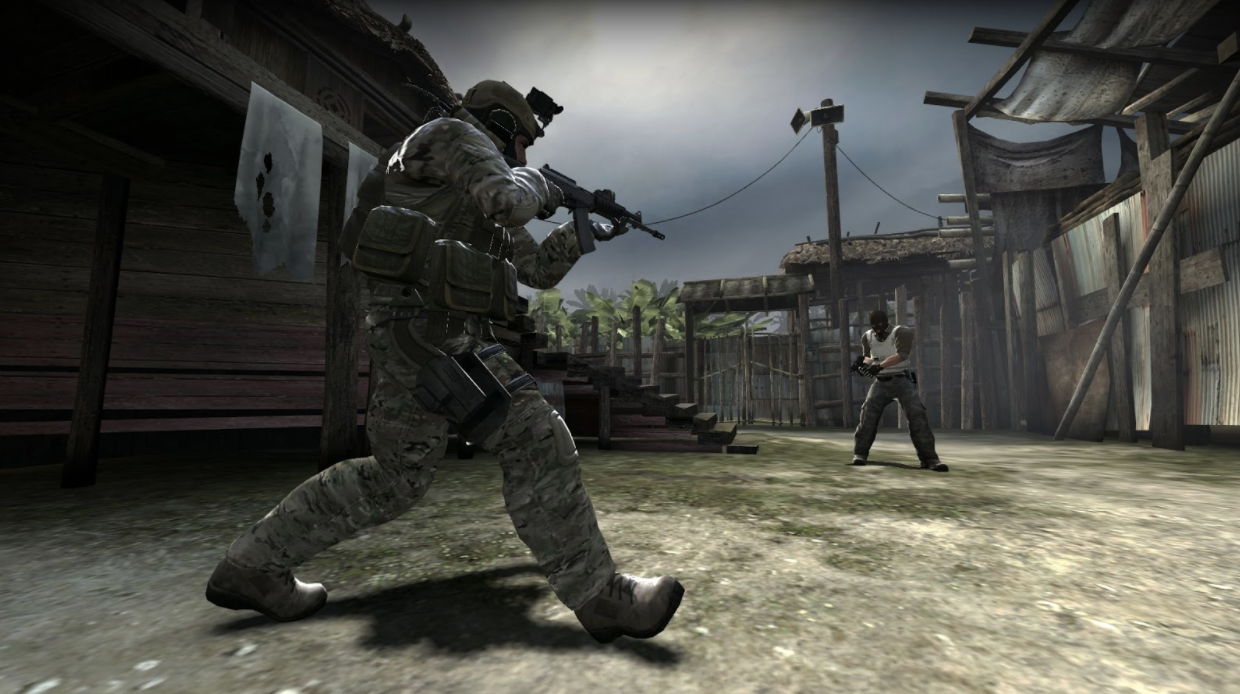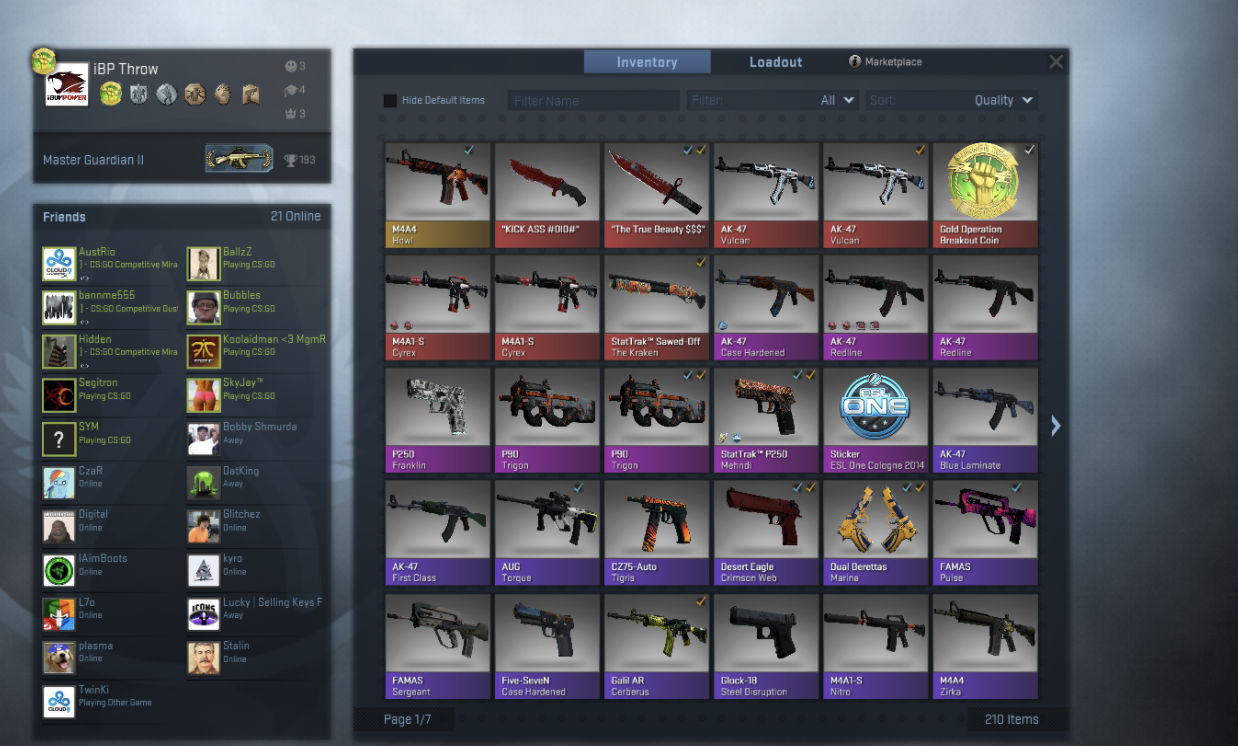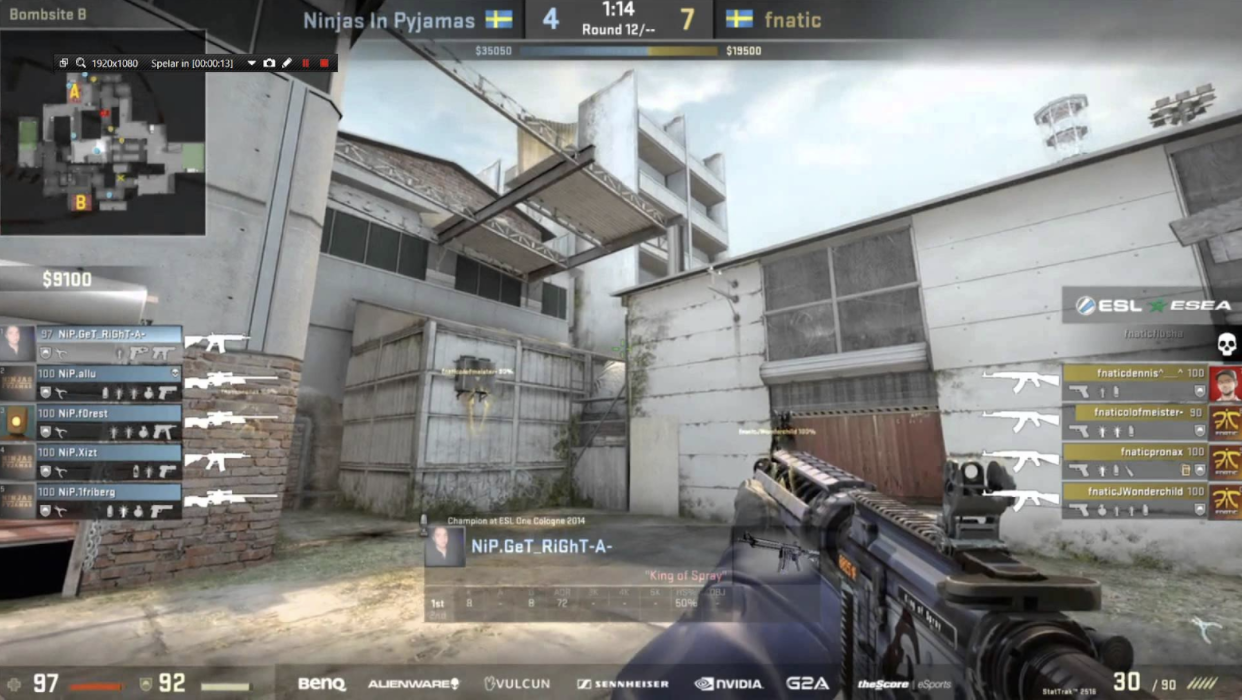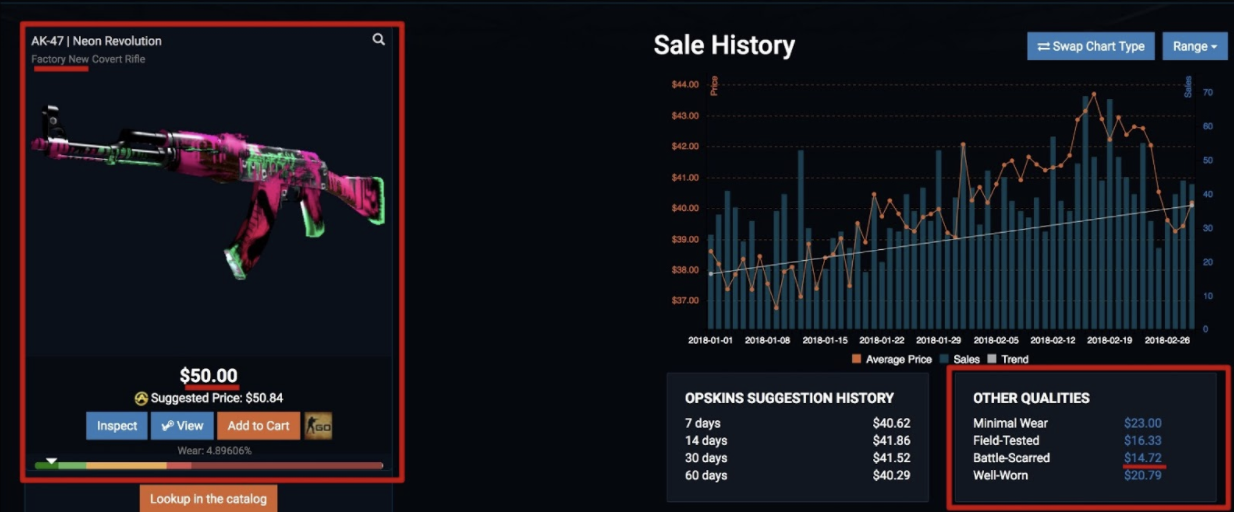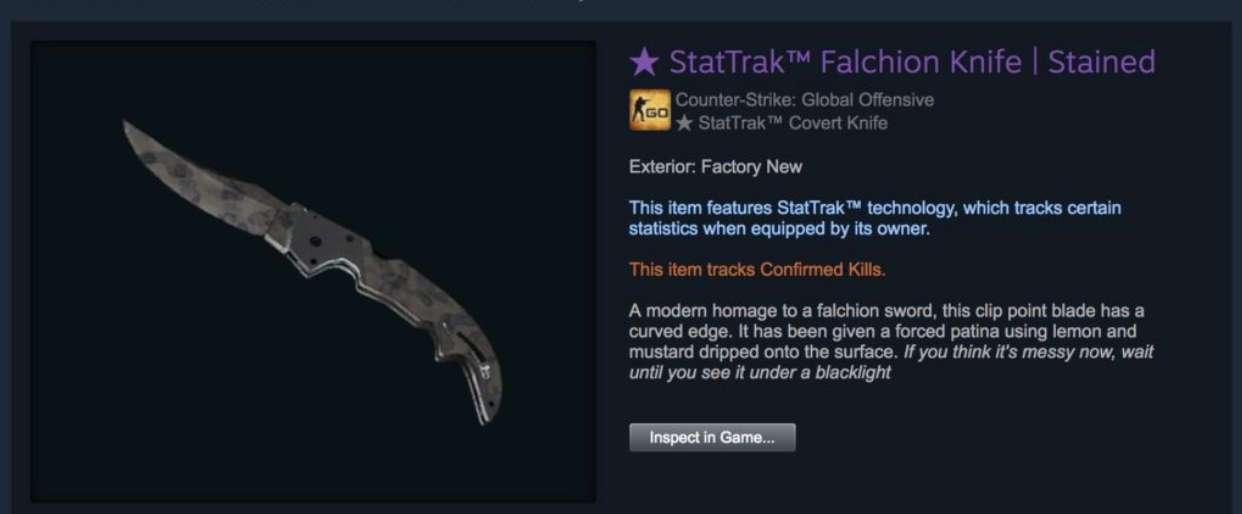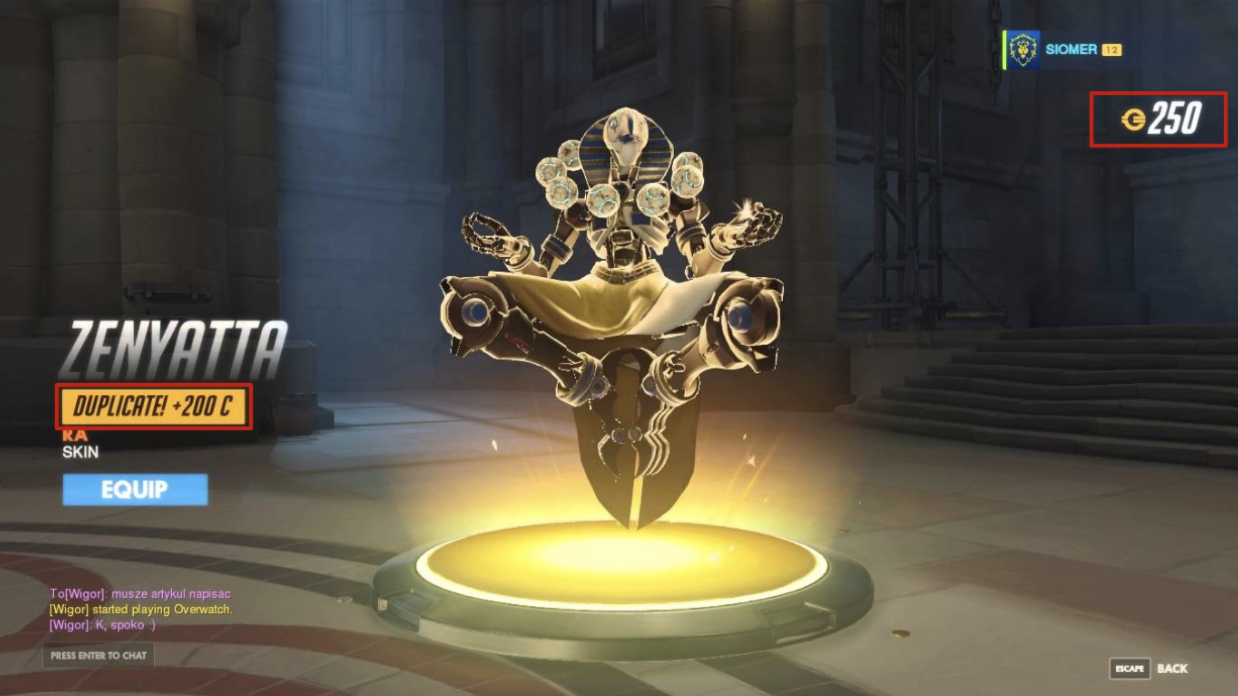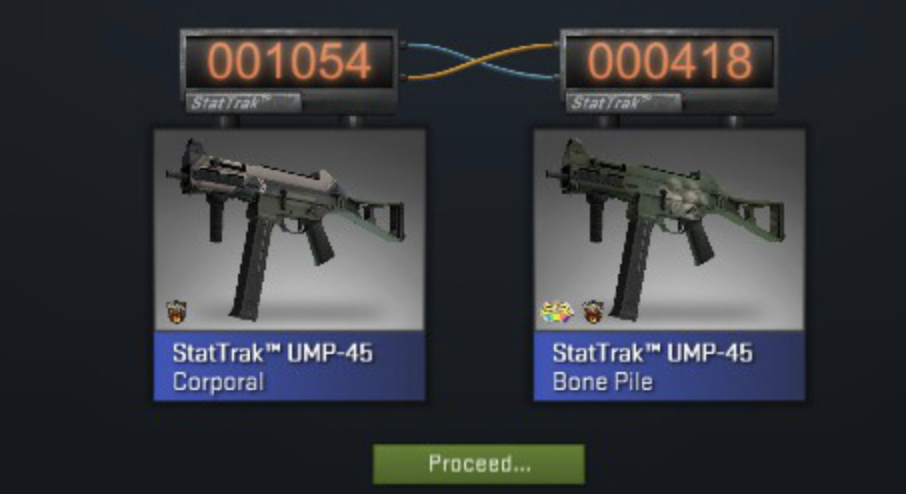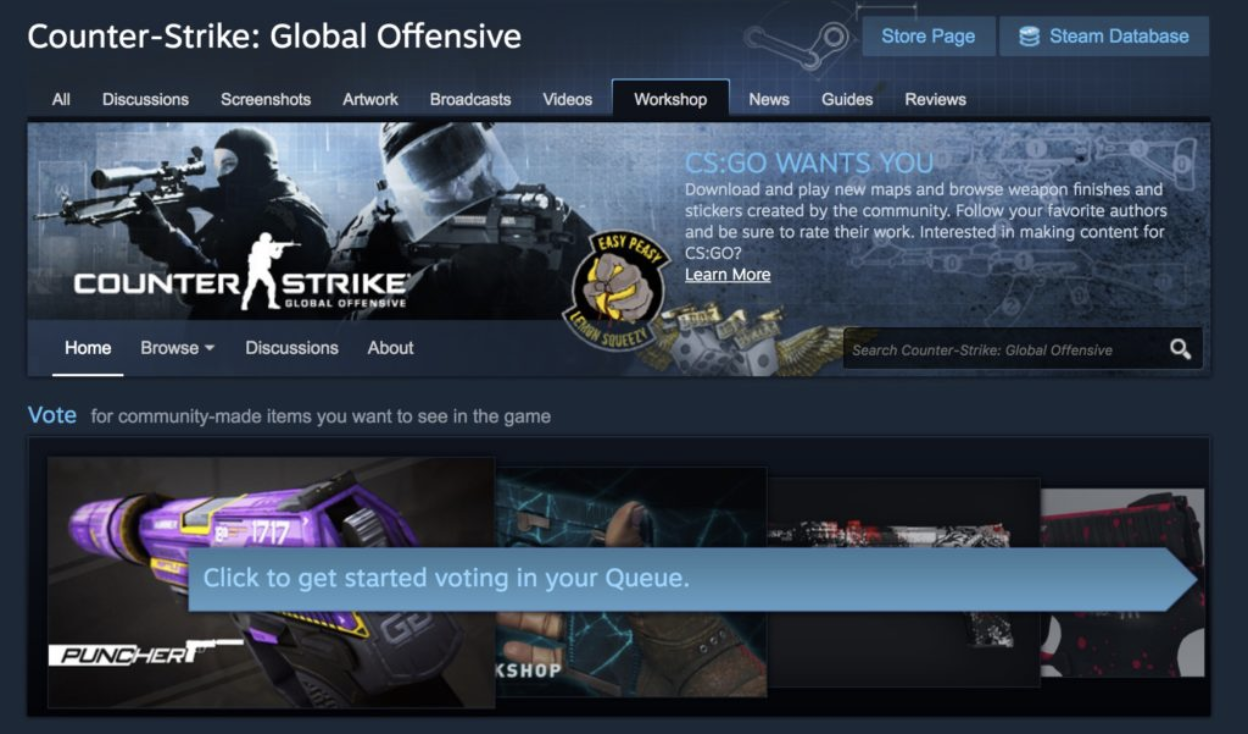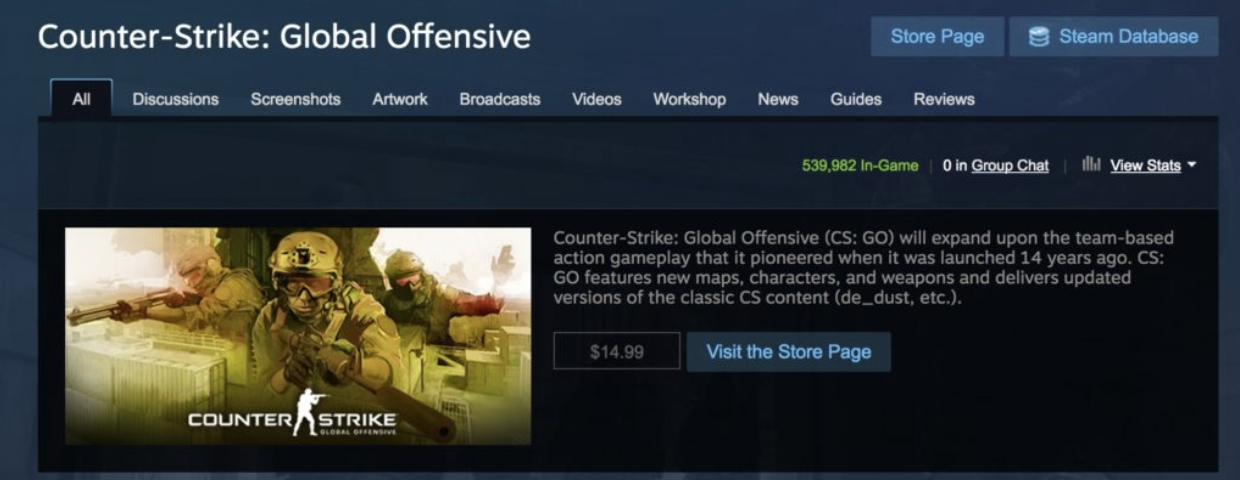How Counter Strike Can Sell a Single Skin for $61,000
Counter-Strike: Global Offensive is one of the most popular games in the world, and for good reason. The latest iteration of the enduring Half-Life mod introduced such a compelling spin on the tactical shooter formula that Counter-Strike is still, to this day, one of the most successful shooter franchises in the world.
The premise of Counter-Strike is simple: two teams of five players each battle for supremacy across multiple rounds in objective-based game modes. The Counter-Terrorist team (CTs for short) defends two bomb sites against the opposing Terrorist team. The Terrorists win if they eliminate all CTs or successfully detonate a bomb at one of the sites, and the CTs win if they eliminate all Terrorists, or defuse a planted bomb. Players earn money for kills, successful objective plays, or winning / losing a round. They can spend that money on weapons, armor, and equipment to give them an edge in the upcoming round.
A Counter-Terrorist takes aim at an enemy Terrorist in Counter-Strike: Global Offensive
The beauty of Counter-Strike is that this core formula has barely changed over the decades, despite numerous sequels and re-imaginings of the franchise. With Valve’s modern take on CS with Counter-Strike: Global Offensive (CS:GO), the venerable developer added what many players believe to be the most meaningful update to the long-standing formula: weapon skins.
Skins have been around in Counter-Strike since it was a mod for the original Half-Life, but never in the way they exist now. In the old days, players hungry for a new look for their assault rifle went to a third-party site like FPSBanana and downloaded skin packs. They’d have to replace some files in the core game folders, test things out, and tweak settings until the skins worked just right. Valve, being the shrewd developer they are, saw this as an opportunity.
When CS:GO’s skins released, they used a traditional gacha box system, with one critical addition to the formula: the Steam Marketplace. The Steam Marketplace offers a sanctioned, purely digital marketplace for players looking to buy, sell or trade their Steam items with other players, and when CS:GO’s skins debuted, the Steam Marketplace exploded in popularity.
Many other games are on the Steam Marketplace today, but none of them have items that are as valuable as CS:GO’s collection. What makes CS:GO’s items worth so much? Why do players place so much value on skins in the first place? Let’s break it down.
The Value of Vanity
At its core, vanity in video games is a function of visibility. The more visible or prominent an item is in-game, the more valuable it becomes. In CS:GO, players have several options at their disposal for purchasing weapon skins for all of the standard weapons in the game. They can purchase keys to unlock containers with a random chance at different skins for different weapons, or they can purchase the skins directly from other players via the Steam Marketplace.
An impressive collection of weapon skins in CS:GO
The value that players place on these skins is an incredible thing to behold. Some of the rarest items, which tend to be knife skins with custom animations, can fetch upwards of $400, depending on the “quality” of the item (more on this later).
I know what you’re thinking. $400 for a skin is pretty nuts. But the truth is, vanity doesn’t really have a price ceiling. Because value is self-assigned and probability doesn’t favor the player, it’s impossible to say how much a custom knife with an estimated drop rate of 0.44% is actually worth to most people. In CS:GO, however, there are a few systems in place that make the asking price worth considering for those who do have the cash to burn.
For one, the knives are pretty rad. Seeing as the knife is one of two default weapons you receive at round start (while serving a universal and distinct functional purpose) it has, arguably, the greatest visibility out of all the weapons in the game. Check out the list so far in action below:
Additionally, all weapons dropped in CS:GO during combat bear the original owner’s name, like so:
Though you can’t drop your knife, other high-value weapons like the AWP sniper rifle will always bear your username when picked up by other players, reminding them of the true owner of the weapon they’re using. This is visible to the current user of the skin, as well as other players spectating (more on this in a moment). This effectively extends the visible “range” of the skins you purchase, supplying additional fuel for your ego.
Additionally, CS:GO features a spectator mode. When you die in a competitive CS:GO match, you are able to spectate from any of your living teammates’ perspective, allowing you to see everything they see. When you’re the last member of your team remaining, the “clutch factor” kicks in (aka social facilitation) and the collective gaze of your dead teammates becomes fixated on you, including which skins you’re using.
Spectator mode on display in an esports match for CS:GO
How “elite” you appear in these tense moments is an intangible, but highly satisfying thing, and nothing screams “badass” like an ultra rare butterfly knife dancing on-screen in your hands as you win the round. It’s a confidence booster, an “I got this” feeling that resonates with everyone watching you, all because of the inherent belief that your ownership of such a luxurious skin is an indication of your dedication to the game.
And finally, there’s the potent marketing potential of CS:GO’s thriving esports scene. All CS:GO pros play in competitive tournaments using their personal Steam accounts, which includes their personal configuration settings, as well as their skin inventory. Seeing a pro use a specific skin on stream during an esport event is akin to a celebrity endorsement for that skin, and by extension, skins for CS:GO in general.
Pros will even occasionally trade their personal skins to other players for hefty sums of cash. It’s a lot like buying the game-winning home run ball from your favorite pro baseball player, or having Michael Jordan sell you a pair of signed basketball shoes, and it lends a sort of authenticity to the entire system that other games have yet to successfully replicate. And, if that wasn’t enough, players watching select CS:GO esports tournaments using the in-game spectator mode have a chance at earning “Souvenir” weapon skins, which are unbelievably rare, limited versions of skins that only drop during those events for in-game spectators. These skins have been known to go for absolutely absurd amount of money, all because of their one-of-a-kind nature.
A “Souvenir” quality weapon that dropped for a small amount of Dreamhack 2013 viewers
Aside from all of these external elements driving interest in skins themselves, Valve has also layered in some unique systems to maximize their in-game gacha system. These systems are a big reason for CS:GO’s success on the Steam Marketplace, and significantly amp up the desirability of weapon skins.
Weapon Wear
When you open a CS:GO case, the item you receive goes through a series of rolls to determine its overall quality. The first is the skin itself: higher rarity skins drop less frequently - pretty standard stuff. Where Valve took things in a totally different direction, however, is the second “wear” roll. Essentially, once the game has determined which skin you’ve received from a crate, it does another random roll to determine how damaged the skin is going to look. This is all built into Valve’s procedural wear generation system, which takes an otherwise perfect version of a skin, and programatically scratches, scuffs, or otherwise dirties up its appearance with a specialized software tool. Here’s an example:
There are five categories of wear, each with a specific “wear value”. This wear value is generated as a random floating point number (that is, it can have a LOT of decimal points), and depending on which range the value falls under, the weapon is assigned a categorical “Wear Quality”. So, for example, if your skin has a wear floating point value of 0.051456, it is considered to be “Factory New”, and looks pristine.
The five different wear ranges, in order of quality, are:
Factory New (0.00 – 0.07)
These skins are basically pristine. Getting a skin that is Factory New (has a randomly assigned wear value between 0.00 and 0.07) is extremely rare, resulting in its worth on the Steam Marketplace to be dramatically higher than that of lesser wear values.
Minimal Wear (0.07 – 0.15)
Skins that have Minimal Wear may have a few light scuffs and scratches on the “paintjob” of the skin, but the damage is very minor. They are still high value, but remarkably less so than Factory New versions of skins.
Field Tested (0.15 – 0.37)
Field Tested is the threshold where noticeable damage starts to appear. You may see some meaningful wear in high-visibility parts of the skin (like in the foregrip or barrel areas), but unless you’re extremely OCD about having something that is perfect quality, you may not notice the damage during in-game combat.
Well Worn (0.37 – 0.44)
Well Worn skins are significantly more damaged than Field Tested skins. The vibrancy of the skin’s primary colors may be more muted, and hard edges may appear “worn off”. Wear is almost certainly noticeable during gameplay.
Battle Scarred (0.44 – 1.0)
These are the most worn skins in the game. Battle Scarred weapons may have entire chunks of the skin missing from the weapon, or significant desaturation.
The difference in value for a high-rarity skin that is Factory New versus one that is Battle-Scarred is dramatic. Every skin in a single CS:GO case has effectively infinite wear permutations, creating an extremely long tail for players to chase. When you consider that each case has an average of 18-20 items, the investment potential is evident.
On the left: a Factory New skin and its price ($50) vs. Battle Scarred in the bottom right ($14)
This approach has several advantages:
- Every skin is effectively thousands of unique skins, due to the floating point value
- Cases can be released far less often, as they have much more “content” per crate
- Wear is a procedural system built into Valve’s editing tools, creating huge ROI
…but a couple of significant downsides:
- Getting the skin you want at harsher wear values feels awful
- True “collection” or filling out a “stickerbook” feels impossibly out of reach
- The extremity of the randomness is discouraging for less wealthy players
Pure RNG
While Valve have never publicly released its drop rates for CS:GO cases, it’s likely that CS:GO does not use any form of gacha forgiveness mechanic, which is to say that the game does not automatically give you a higher rarity item after a certain amount of attempts. Because skins are purely cosmetic, there isn’t a balance or gameplay requirement to ensure players get higher rarity content at specific intervals (compared to, say a WoW raid, where players are chasing specific gear with utility that impacts their progression). This means that the drop rates for CS:GO skins can be extremely punishing, because all of their value is contained within their insane rarity.
Now retailing for $1,400! (Seriously!)
This also means that most players sampling the system with $5 or $10 are going to get very little value out of their experience. However, the system also completely removes the price ceiling on skins, effectively creating the opportunity for huge resale value on top tier items. You could open hundreds of cases and never get a high rarity skin, but that’s kind of the point. Players who really want specific, ultra rare skins can pay an extreme premium on the Steam Marketplace to acquire them directly, feeding the loop of the system exceedingly well. In a way, it’s just like physical CCGs, where chasing after a specific Magic: The Gathering card can be shortcutted by simply buying said card from a retail shop or friend rather than opening boxes and boxes of card packs.
It’s important to note that without the Steam Marketplace, this design decision would be overly punishing, as players would have no way to get to the content they actually want without being extremely lucky. Other games who use loot box systems without the Steam Marketplace tend to have “dust” currencies. Dust currencies are usually awarded to players when they receive duplicates of content they already have.
A player receiving a duplicate skin in Overwatch. Note the “Duplicate!” tag awarding a currency.
Dust currency can then be used to outright purchase the items players want. Games like Overwatch, Hearthstone, and Heroes of the Storm have all adopted this model, because they need to ensure that, after a certain amount of loot boxes, players will get what they want. Without that guard rail in place, loot box systems not connected to Steam’s ecosystem would be almost exclusively designed for price-insensitive heavy monetizers.
StatTrak Skins
One of my personal favorite components of CS:GO’s weapon skins are its unique StatTrak variants. StatTrak skins are permutations of skins that feature a kill counter on the side of the weapon, allowing you to show off how invested / skilled you are with a particular weapon. For every kill you get with that specific weapon skin equipped, the number on the StatTrak module increments by one. Nearly every skin in most of CS:GO’s recent skins has a non-StatTrak version, and a StatTrak version. This means that, when opening a CS:GO case, the game is actually rolling on three separate variables:
The weapon skin itself
The wear value of the skin
StatTrak or non-StatTrak
This adds an extra wrinkle into the RNG equation. Not only are players chasing Factory New versions of the skins they want, but they also want Factory New, StatTrak variants! The probability of receiving this “perfect roll” is insanely low, which, again, creates extremely rare items out of a very limited content set.
The StatTrak module on a USP-S in CS:GO
StatTrak is an awesome engagement feature, which adds a meaningful extra layer of vanity to the weapon skins in CS:GO. Other players spectating you when you’re using that weapon can see your kill counters, but if you die and someone else picks up your weapon, the StatTrak counter displays an “unknown user” error, preserving its increments only for the owner of the skin.
Of course, StatTrak weapon skins are very clearly “best-in-slot” content - that is, they have the potential to be so compelling that they make all other content competing for the same slot irrelevant. Valve solved this problem by introducing the StatTrak Swap Tool, which lets you take the stats you’ve incremented on one StatTrak weapon skin, and move them over to another StatTrak skin, so long as they’re for the same weapon.
This means that if you’ve gotten hundreds of kills on an awesome M4A1-S StatTrak skin, you are still interested in future M4A1-S StatTrak skins, because you can preserve your progress for a small fee ($1.99 in the United States). Had the StatTrak Swap Tool not existed, players might find themselves too invested in existing skins to chase new skins, which would have been a huge issue for repeat monetization.
Community-Created Content
None of these systems would matter if the skins themselves weren’t desirable or beautiful. Valve’s initial approach to skin design for CS:GO was fairly standard: The assumption was that players only wanted skins that fit within the tactical, military theme of the franchise. This assumption was disproved when Valve introduced the Steam Workshop, a system that let players submit and vote on the skins that would end up in the game. Skins evolved into significantly more vibrant and eye-catching designs, revealing the actual preferences of the playerbase.
You can make a living designing content for CS:GO
When Valve decided to let players create skins for CS:GO, they unlocked an entirely new batch of potential. Letting the community create content via the Steam Workshop has several key advantages:
When players influence what content to release, content has a much higher success rate
Developers are freed from the burden of the “content treadmill” problem
Community creators receive a percentage of content sold, resulting in higher quality content and a thriving marketplace
The system is remarkably elegant - Steam users submit their weapon skins to the Workshop, which then become available for voting. The skins with the most upvotes rise to the top of the heap, where Valve presumably goes through some kind of internal selection process (they haven’t specified how this works publicly) and then those items appear in a crate available to all CS:GO players. Users whose content makes it into the crate receive a percentage of all of the sales of that crate. Valve has remained tight-lipped on the specific percentage, but reports have shown that successful content creators are making upwards of 6 figures for their submissions. It’s a completely mutually-beneficial scenario - Valve doesn’t have to create content, creators get paid, and players get rad content that resonates with them. Talk about a win-win!
Cultural Relevance
Though Valve has certainly created an incredible skin ecosystem for CS:GO, its efficacy would be limited if CS:GO was a shallow, boring, or otherwise unfun game. The fact that the game is a cultural phenomenon is the foundation on which all of its cosmetic success rests.
If a game is popular, its cosmetic content is significantly more likely to be successful, as vanity is a function of visibility both in and out of game. Put simply - no one buys skins for dead games. A game’s Twitch presence plays a huge factor in this, as many vanity items are only visible (or constantly visible) to the player currently using them. If that player happens to be broadcasting their skin to 20,000 viewers every day, the visibility of that item increases dramatically, and further adds value.
You don’t need half a million CCU, but it certainly helps
Developers can do a lot to surface cosmetic content in-game, but without a critical mass of players engaging with it, none of it matters. This is an unfortunate reality, but an important one to identify. It is entirely possible to do everything right and still fail based on whether or not the market responds to a game.
Great, But Not Perfect
CS:GO’s weapon skin ecosystem is a remarkable demonstration of the power of Valve’s Steam platform. It’s one of the few examples of a strategy that can only exist given the perfect harmony of CS:GO’s popularity, its rarity design, and the Steam Marketplace.
That being said, the product isn’t perfect. Discoverability is still a huge issue for the Steam platform in general, and the Marketplace is no exception. For newer players or those who have limited budgets, Valve does a remarkably poor job of explaining the different components of the skin ecosystem, which could result in smaller monetizers having a poor experience with the system and halting their spend altogether. The Marketplace features a confusing interface that more closely mimics a stock trading website than a gaming platform’s content trading platform, which is likely to turn first-time engagers off of the system entirely. A FTUE, interface redesign, and / or awareness campaign for CS:GO’s skin economy would do wonders to encourage first-time conversion, and bring more players into the fold.
Steam’s current Marketplace interface is not exactly noob-friendly
It’s also incredibly important for developers looking to replicate this system to understand the potential pitfalls of CS:GO’s unforgiving gacha mechanics, and how that approach might translate poorly to platforms where the Steam Marketplace does not exist, like console or mobile. Predicating your in-game skin economy on CS:GO’s systems means you’ll need to leverage all of Steam’s systems and tool pipelines to maximize your return, or you may find yourself with poor repeat conversion and a group of very angry, unsatisfied first-time customers.
But, if you’re a Steam-exclusive game looking to create a healthy skin economy, CS:GO has a lot of fantastic examples of what to do right. There are also opportunities to reduce the pain of first-time engagers with limited-time offers, dust currencies, or other guard rails to ensure that everyone has fun engaging with weapon skins, not just whales with cash to blow.



